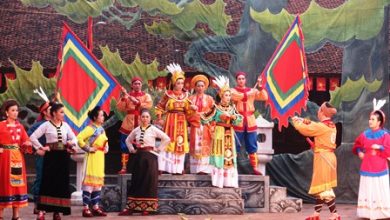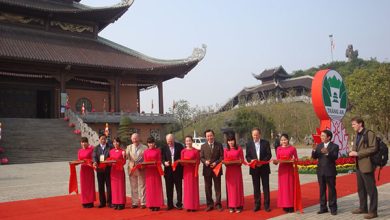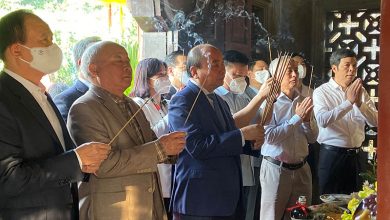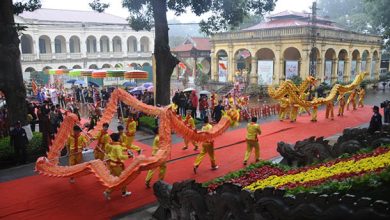Artifacts from the Imperial Citadel of Thang Long on Display in Ho Chi Minh City
150 artifacts, documents, and images from the Imperial Citadel of Thang Long Heritage Site are on display at the Ho Chi Minh City Museum, District 1.

The exhibition, themed “Imperial Citadel of Thang Long – Hanoi, a Heritage for the Future,” showcases archaeological artifacts, including architectural materials and royal household items. Additionally, there are numerous images, diagrams, and perspectives of structures within the Citadel, such as Kinh Thien Palace, Doan Mon Gate, Hau Lau Pavilion, and the Flag Tower.
The Imperial Citadel of Thang Long is a complex of historical relics tied to the history of Thang Long Citadel and Hanoi, beginning from the period of Northern domination under the rule of the Sui and Tang dynasties (7th-9th centuries), spanning through the dynasties of Ly, Tran, Le, Mac, and Nguyen. In 2010, the site was recognized by UNESCO as a World Cultural Heritage.
The event is part of the program “Hanoi Days in Ho Chi Minh City,” commemorating the 70th anniversary of the Capital’s Liberation (October 10, 1954 – October 10, 2024).
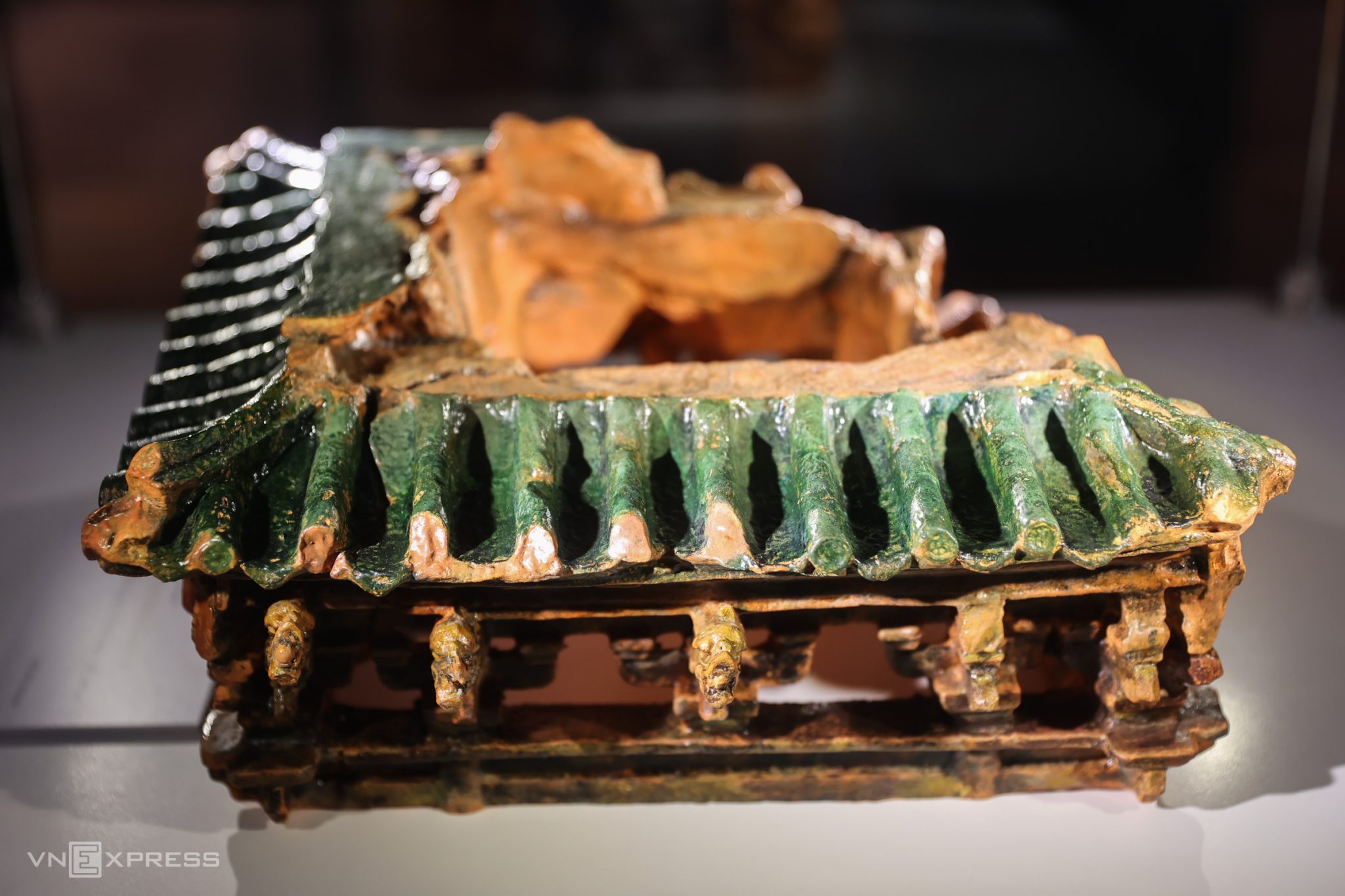
A highlight is the model of a palace from the Early Le Dynasty (1428-1527), recognized as a National Treasure earlier this year. The following image is a description of the model’s structure provided by the Department of Cultural Heritage.
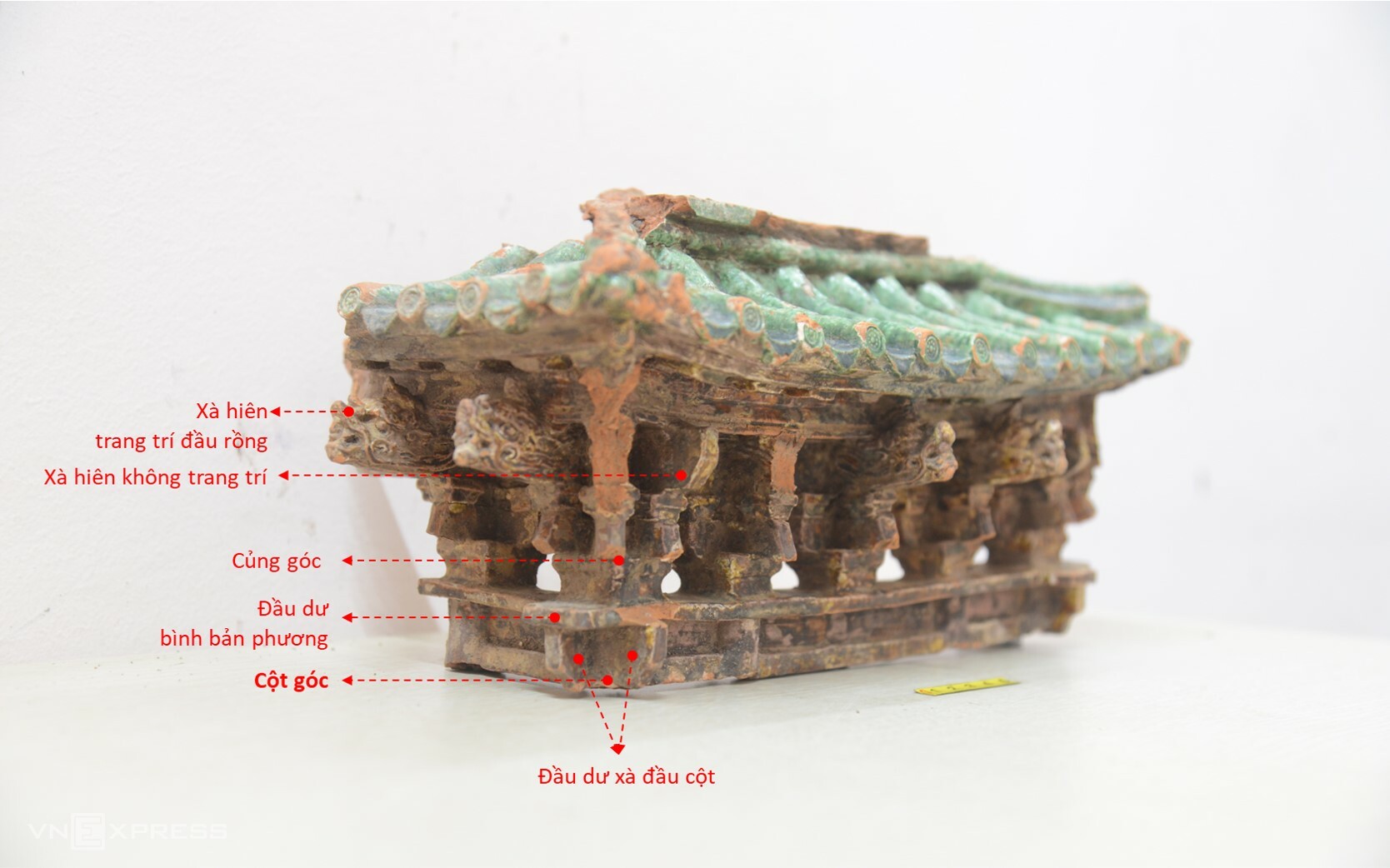
The model dates back to the 15th century and is made of glazed terracotta, with an overall height of 16.8 cm. The artifact currently retains only part of the roof and the structural frame of the completed building. The column system includes four main columns and 12 auxiliary columns (veranda columns), while the beam system consists of the principal beam, upper beam, and lower beam. The bracket system comprises brackets, struts, jars, and square beams. This model provides some important details of royal architecture from the Early Le Dynasty for the first time.
According to the records of the Department of Cultural Heritage, no similar architectural artifacts from the Early Le Dynasty at the Imperial Citadel of Thang Long have been found or announced. This confirms the uniqueness of the artifact.
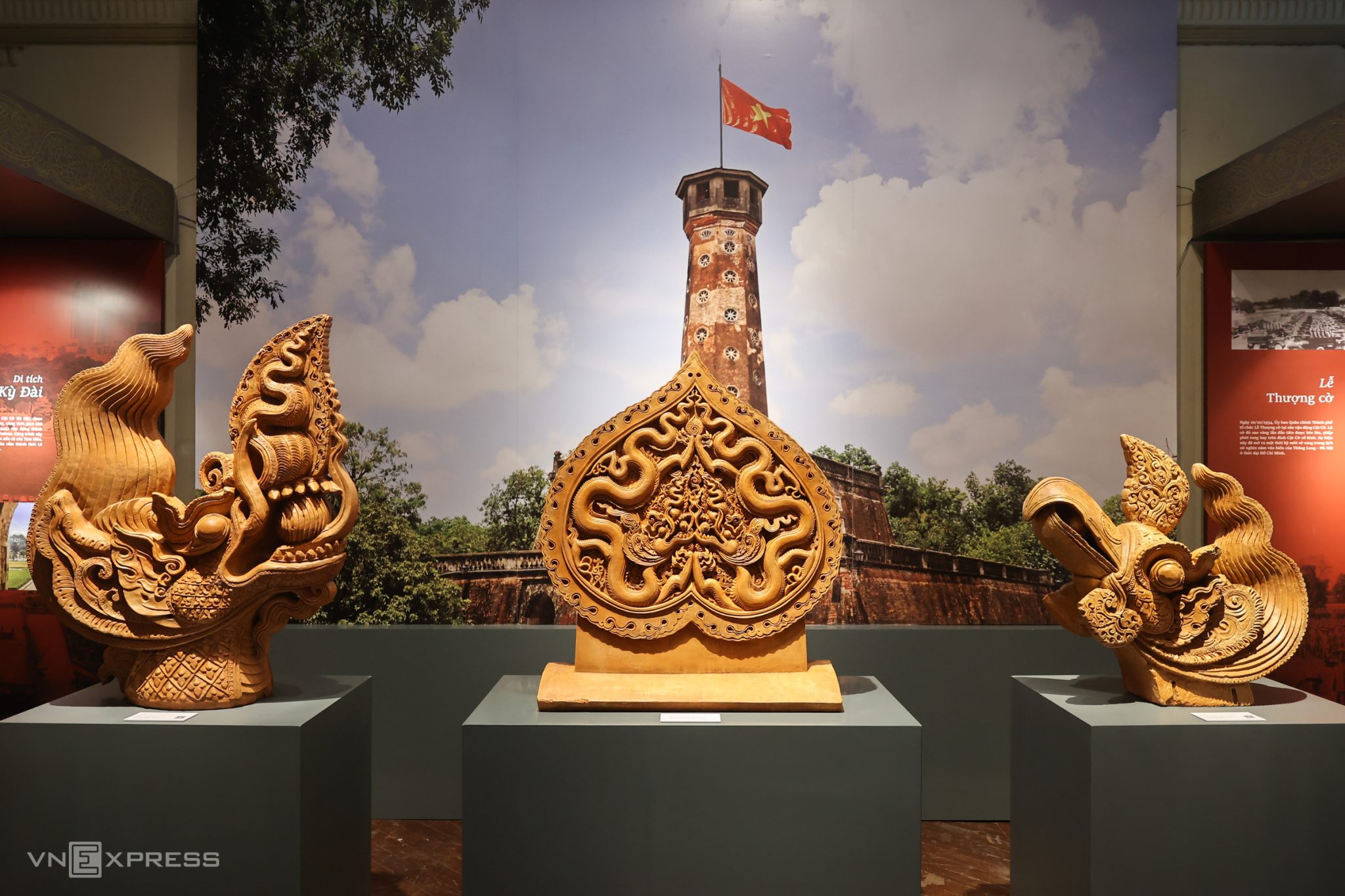
From left to right are ancient artifacts including a dragon head statue, a ridge tile with a decorative leaf and dragon motif, and a phoenix bird head statue. All artifacts are made of terracotta and date back to the Ly Dynasty (1009-1225).
The image of the dragon from the Ly Dynasty typically has its head raised, mouth wide open, with a long, smooth body, and no scales. Additionally, the dragon’s whiskers and crest are intertwined, forming an image resembling a Bodhi leaf, reflecting the golden age of Buddhism during that period.
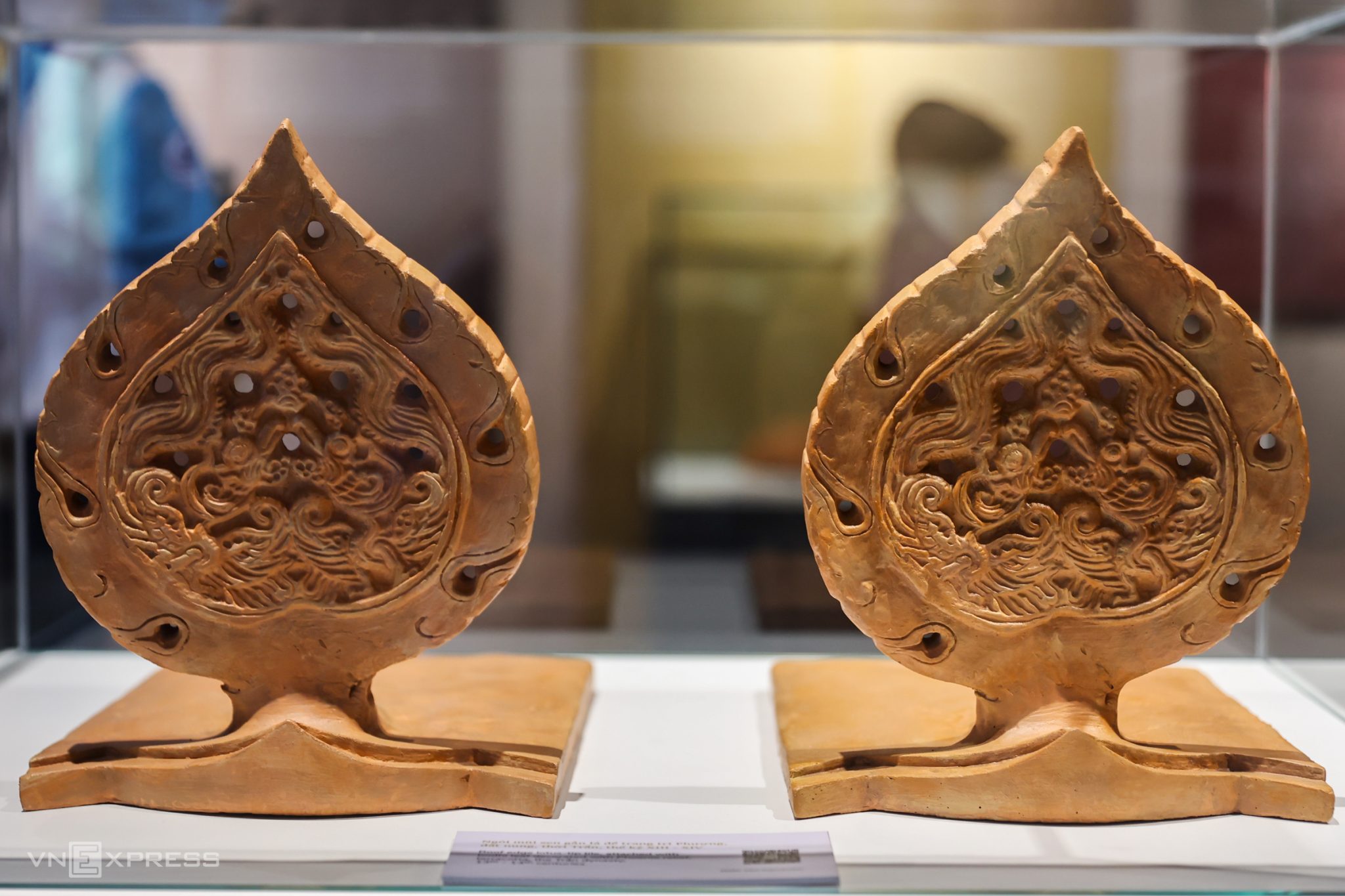
A lotus-shaped roof tile with a phoenix motif, made of terracotta from the Tran Dynasty (1225-1400).
The tile measures 33 cm in length, 24.4 cm in width, and 31 cm in height, and was used on the eaves of palace architecture during the Tran Dynasty. The artifact consists of two parts: the body and the Bodhi leaf decorated with a pair of phoenixes attached to the back of the tile. The tile body is shaped in a double-layered lotus petal design. The symmetrical Bodhi leaf, adorned with phoenixes, is a familiar motif from the Ly and Tran Dynasties, reflecting royal values and Buddhist symbolism.
On the surface of the leaf, there are 18 small holes symmetrically placed, balancing the edge of the leaf and surrounding the phoenix. These small holes make the leaf and phoenix appear lighter and more three-dimensional, while also allowing light to pass through.

A tubular tile featuring a dragon motif, glazed in yellow and green, from the Early Le Dynasty (1428-1527).
According to information from the Imperial Citadel of Thang Long website, the two artifacts are roof tiles from palace structures. The dragon head on the tile’s back rises high, with its mouth wide open, holding a pearl. The flowing mane behind the dragon curves and connects to the tile’s body. The tiles are interlinked, with rows of tiles forming the image of a dragon lying on the roof. This design adds to the grandeur and magnificence of the palace architecture during the Early Le Dynasty.
Currently, two different types of dragon-shaped tiles have been discovered at the Imperial Citadel of Thang Long, distinguished by color: yellow and green. More green tiles have been found compared to yellow ones. Based on the color regulations of the dynasties, yellow is often associated with the nobility of the king and the most important structures of the court.
On this basis, it can be inferred that the yellow dragon-shaped tiles were used in especially significant royal buildings. Kinh Thien Palace, the main hall of the Le Dynasty, might have been roofed with these tiles.
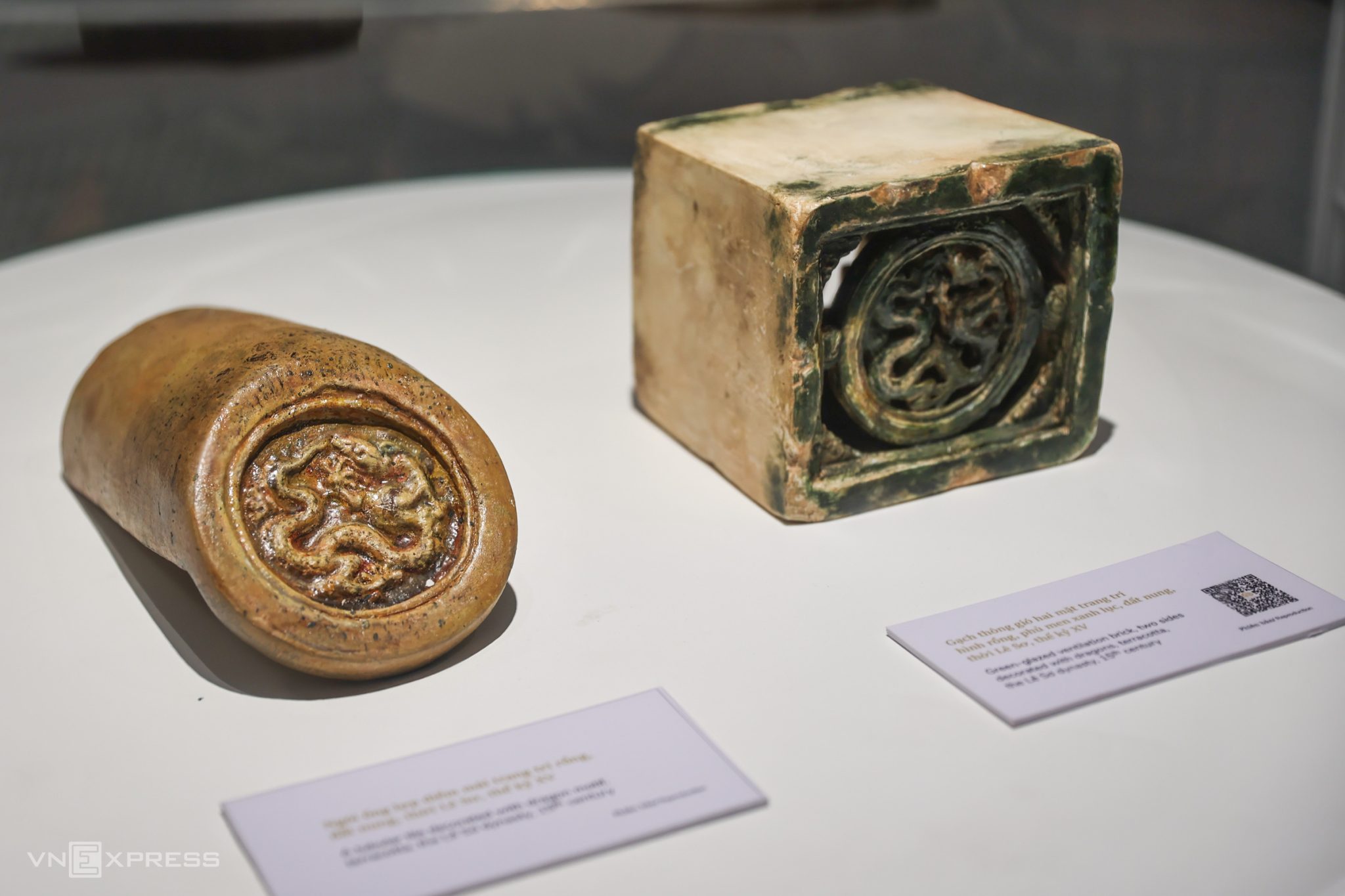
Tubular eave tiles (left) and ventilation bricks from the Early Le Dynasty, made of terracotta and glazed in yellow and green, both decorated with dragon motifs.
Ventilation bricks were attached to the roof structure to provide the palace with more light and airflow. A significant number of these bricks, dating back to the Early Le Dynasty, have been discovered at the Imperial Citadel of Thang Long Heritage Site.
The bricks are square-shaped with six faces. Four side faces connect with other bricks or roof components, while the front and back faces allow light and air to pass through.
The main decorative motif on the bricks is a dragon coiled within a circular shape. The dragon is depicted in full Early Le Dynasty style, gracefully flying in a dynamic posture. Surrounding the circular dragon motif is a solid square frame, adhering to the symbolism of square (earth) and circle (heaven), representing the harmony between earth and sky. The dragon, enclosed within these two shapes, further emphasizes the imagery of royal authority.

Box-shaped brick decorated with dragon and cloud motifs, made of terracotta, crafted during the Mac Dynasty (1527–1592).
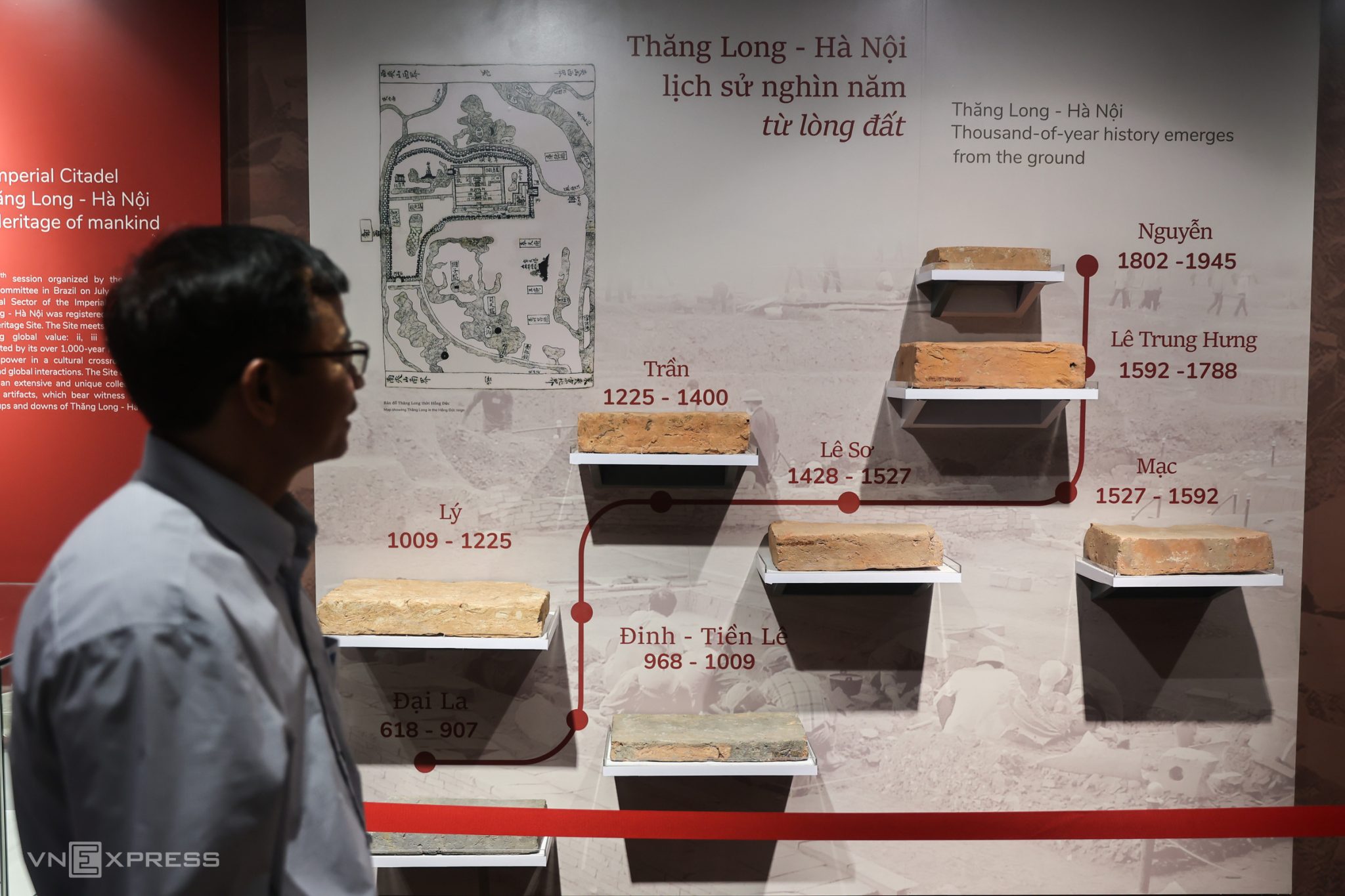
Bricks from the period spanning from when the city was named Dai La to Thang Long, covering the dynasties of Dinh – Pre-Le, Ly, Tran, Le, Mac, and Nguyen, displayed at the exhibition.

Household items used in the royal court during the Ly, Tran, and Le Dynasties. From left to right: a white-glazed ceramic candle holder from the Ly Dynasty, a celadon-glazed ceramic bowl, a stone carp-shaped inkstone from the Tran Dynasty, and a white-glazed bowl from the Early Le Dynasty
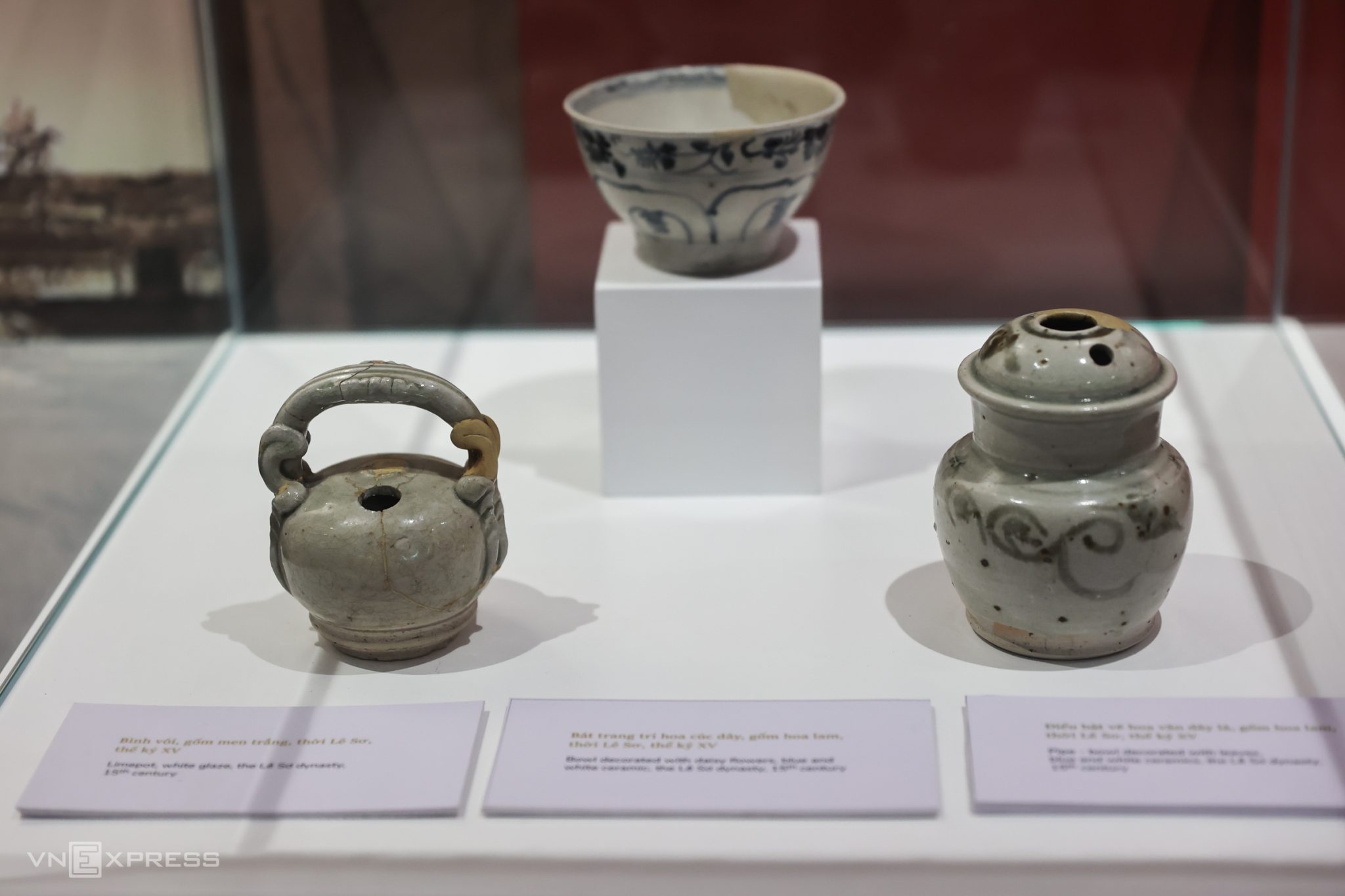
From left to right: white-glazed ceramic lime pot, bowl decorated with chrysanthemum motifs, and pipe bowl with leaf-pattern designs from the Early Le Dynasty.
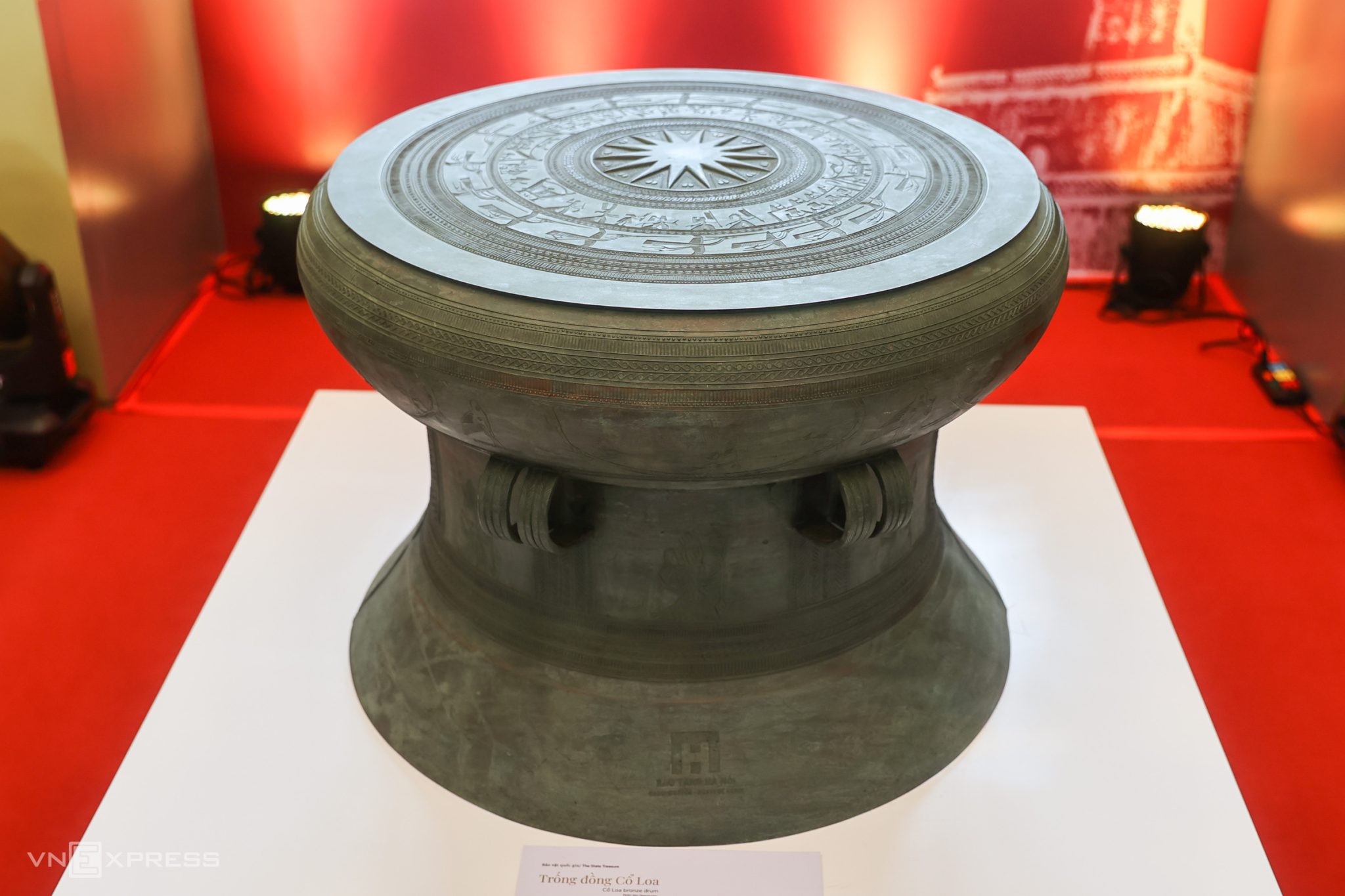
A replica of the Co Loa bronze drum, presented as a gift from Hanoi to Ho Chi Minh City on the occasion of the 70th anniversary of the Capital’s Liberation.
The Co Loa bronze drum was unearthed in 1982 at Ma Tre area, Dong Anh District (Hanoi). The drum was buried face up, containing nearly 200 bronze artifacts inside, including plow blades, shovels, hoes, axes, spears, daggers, arrowheads, bowls, jar fragments, and coins, all dating back over 2,000 years.
The drum features rich decorations, with a 14-pointed star at the center, surrounded by motifs of peacock feathers, birds, and scenes of daily life. The body and base of the drum are engraved with images of people and boats. The artifact was recognized as a National Treasure in 2015.
The exhibition is open until October 31, with an admission fee of 40,000 VND per person.

